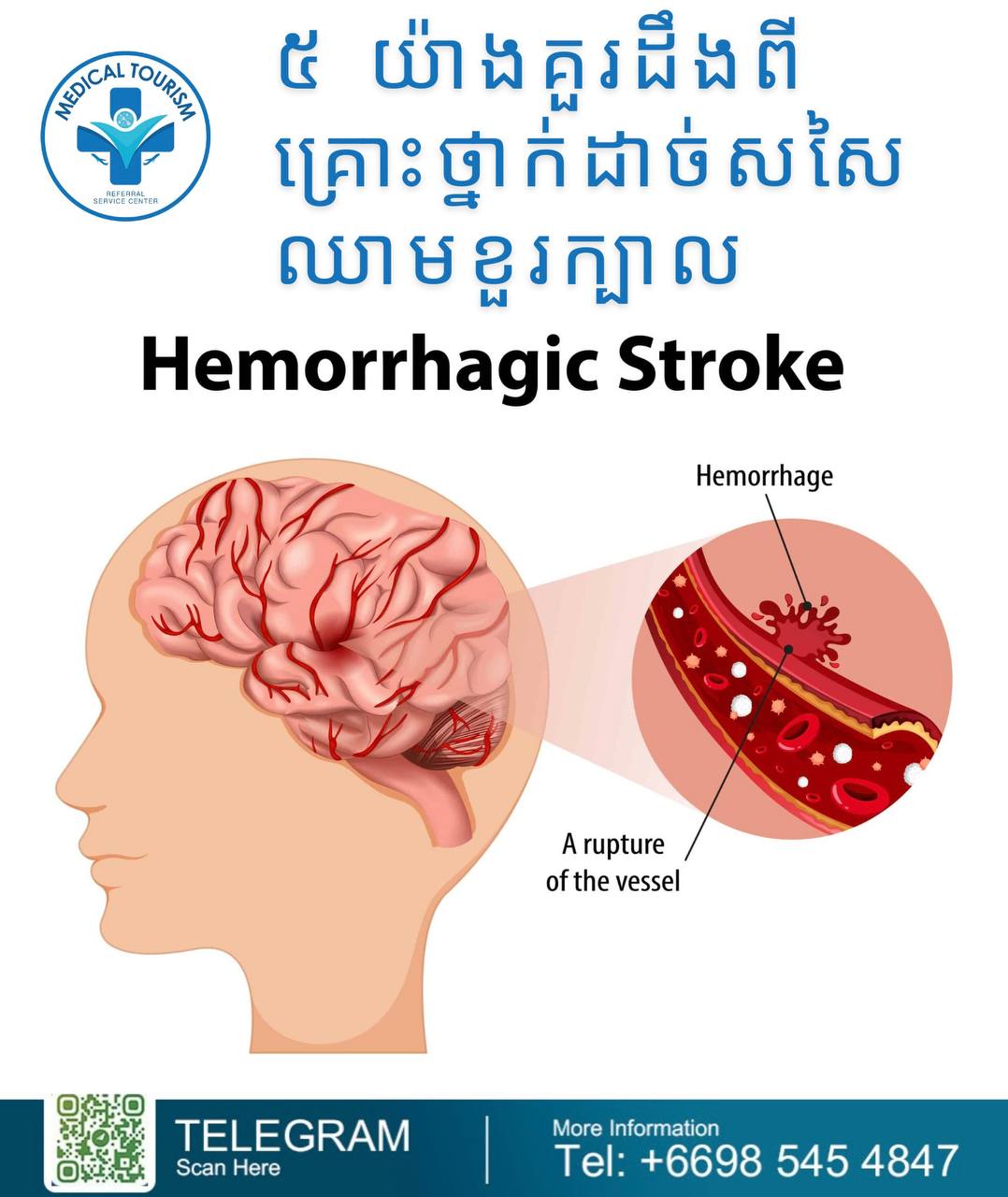Diseases September 6th, 2024
Hemorrhagic stroke

Here are five key things to know about a hemorrhagic stroke:
1. Caused by Bleeding in the Brain: Hemorrhagic stroke occurs when a blood vessel in the brain ruptures, causing bleeding. This leads to increased pressure in the brain, which damages brain cells and disrupts normal brain function.
2. Types of Hemorrhagic Stroke: There are two main types: intracerebral hemorrhage (bleeding within the brain) and subarachnoid hemorrhage (bleeding between the brain and the tissue covering the brain). Both are medical emergencies.
3. Risk Factors: High blood pressure (hypertension) is the most common risk factor. Other risks include brain aneurysms, arteriovenous malformations (AVMs), blood-thinning medications, head trauma, and conditions that affect blood clotting.
4. Symptoms: Symptoms may include a sudden, severe headache (often described as “the worst headache of my life”), nausea, vomiting, vision changes, weakness or numbness on one side of the body, difficulty speaking, and loss of coordination.
5. Treatment and Outcomes: Immediate medical intervention is critical. Treatment may include surgery to repair the blood vessel or relieve pressure in the brain, along with medications to control blood pressure and reduce swelling. Recovery depends on the severity of the stroke and how quickly treatment is provided, but hemorrhagic strokes tend to have higher rates of disability and fatality compared to ischemic strokes.
Fast action is crucial in improving outcomes for hemorrhagic stroke patients.



